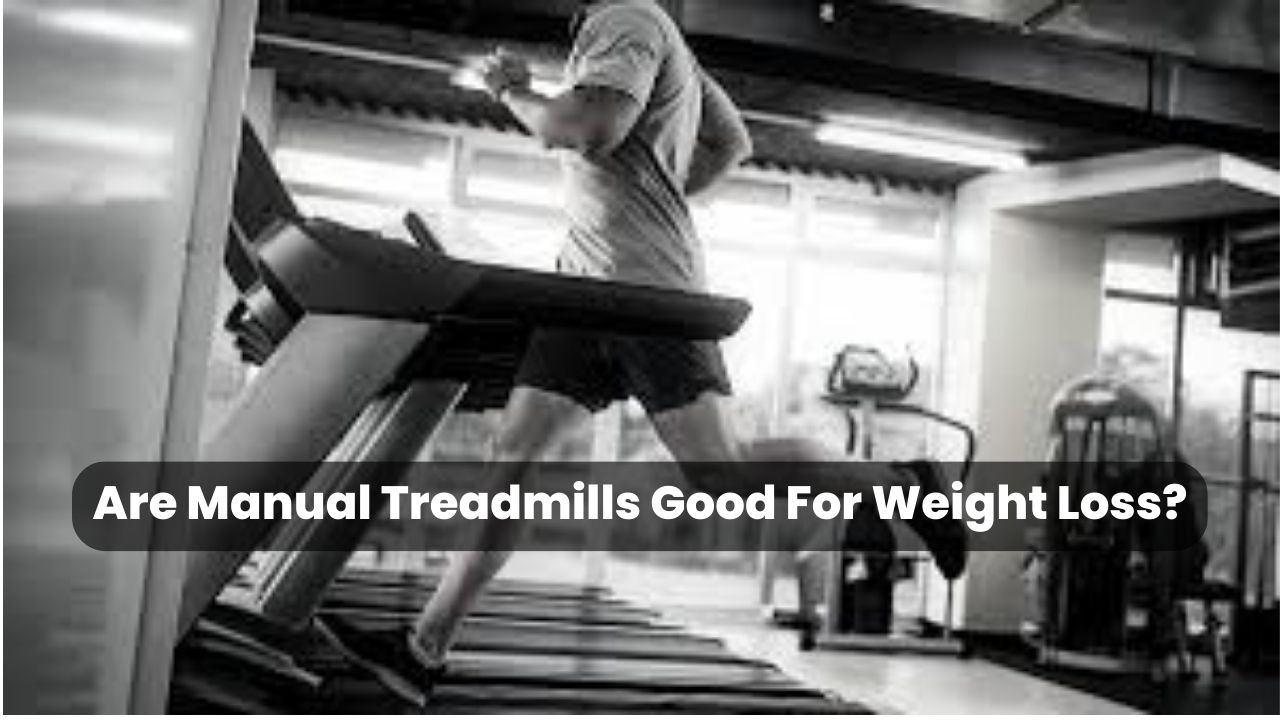Manual treadmills offer a simple yet effective way to achieve weight loss goals. Understanding the benefits of manual treadmills in relation to weight loss can motivate individuals to incorporate them into their fitness routines.
By exploring the features and limitations of manual treadmills, as well as their impact on weight loss, individuals can make informed decisions about their fitness equipment choices.
Table of Contents
Are Manual Treadmills Good For Weight Loss?
Yes, manual treadmills can be effective for weight loss. They provide a convenient and cost-effective way to engage in cardiovascular exercise, which is essential for burning calories and shedding pounds.
Manual Treadmills: An Overview
Manual treadmills are non-motorized exercise machines that rely on the user’s physical effort to set them in motion. Unlike motorized treadmills, manual treadmills do not require electricity or complex controls.
They are designed to be manually propelled by walking or running, offering a natural and intuitive workout experience.
The key benefits of manual treadmills include their cost-effectiveness, portability, and space-saving design, as well as their simplicity and ease of use.
These factors make manual treadmills accessible to a wide range of individuals looking to achieve weight loss goals.
How Manual Treadmills Promote Weight Loss
Increasing Calorie Expenditure
Manual treadmills can help individuals increase their calorie expenditure, which is essential for weight loss. By engaging in higher-intensity workouts on a manual treadmill, individuals can burn a significant amount of calories.
The manual operation of the treadmill also engages different muscle groups, leading to more comprehensive and effective workouts.
Improving Cardiovascular Health
Cardiovascular health plays a crucial role in weight loss. Manual treadmills can help improve cardiovascular fitness by boosting heart rate during workouts.
The increased heart rate stimulates blood circulation and oxygen delivery throughout the body, enhancing overall cardiovascular health.
Additionally, manual treadmill workouts can enhance lung capacity, enabling individuals to engage in more vigorous exercise routines.
Enhancing Metabolism and Fat Burning
Manual treadmill workouts can contribute to an accelerated metabolism, promoting fat-burning and weight loss. Engaging in aerobic exercises, such as walking or running on a manual treadmill, helps increase the body’s oxygen consumption and energy expenditure.
This, in turn, promotes fat utilization and contributes to the reduction of overall body weight. Moreover, manual treadmill workouts can aid in building lean muscle mass, which further supports a higher metabolic rate.
Potential Limitations of Manual Treadmills for Weight Loss
While manual treadmills offer several benefits for weight loss, it’s essential to consider their limitations.
Lack of Advanced Features and Programs
Unlike motorized treadmills, manual treadmills generally lack advanced features and pre-programmed workout options.
This simplicity may not suit individuals who prefer a variety of workout programs or advanced tracking capabilities. However, manual treadmills provide an opportunity for users to customize their workouts based on their preferences and goals.
Impact on Joint Health
Manual treadmills rely on the user’s exertion to set the pace, which can potentially place more strain on joints compared to motorized treadmills.
Individuals with joint issues or those seeking low-impact exercise alternatives may need to exercise caution and consult with a healthcare professional before using a manual treadmill.
Limited Incline and Speed Options
Manual treadmills often have limited incline and speed options compared to their motorized counterparts.
This can restrict the intensity levels of workouts and may not be ideal for individuals seeking more challenging terrain simulations or advanced training options.
Frequently Asked Questions (FAQs)
Can manual treadmills help with overall fitness besides weight loss?
Yes, manual treadmills can contribute to overall fitness beyond weight loss. Regular use of a manual treadmill can improve cardiovascular endurance, strengthen leg muscles, and enhance overall stamina.
How long should I use a manual treadmill for weight loss?
The duration of manual treadmill workouts for weight loss can vary depending on individual fitness levels and goals. It is recommended to aim for at least 150 minutes of moderate-intensity aerobic exercise per week, as advised by health professionals.
Are manual treadmills suitable for all fitness levels?
Manual treadmills can be suitable for individuals of various fitness levels. They offer adjustable resistance levels and allow users to control their pace, making them adaptable to different fitness abilities.
Can manual treadmills be used by people with joint issues?
Individuals with joint issues should exercise caution when using manual treadmills. The impact on joints during manual treadmill workouts can be more significant compared to motorized treadmills. It is advisable to consult with a healthcare professional for personalized recommendations.
What are some alternative exercises for weight loss?
In addition to manual treadmill workouts, alternative exercises for weight loss include cycling, swimming, HIIT (High-Intensity Interval Training), strength training, and aerobic classes like Zumba or kickboxing.
Conclusion
Manual treadmills offer a cost-effective and convenient solution for individuals looking to achieve weight loss. With their simplicity, portability, and effectiveness in burning calories, manual treadmills can play a vital role in weight loss journeys.
While they may have limitations in terms of advanced features and joint impact, manual treadmills remain a valuable option for individuals seeking versatile and accessible fitness equipment.
By incorporating manual treadmill workouts into their fitness routines, individuals can embark on a rewarding weight loss journey while improving their overall health and well-being.
